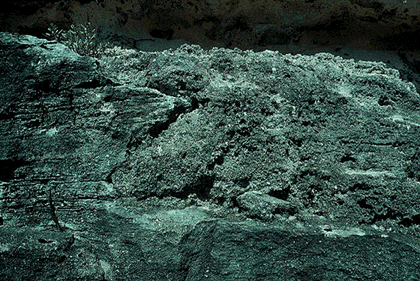
Dune and geosol deposition
Geosol formation
The accumulation of weathered rock, biological debris and atmospheric dust were the processes responsible for geosol formation. They are ongoing processes which occur anywhere other than at the most exposed locations. Where a geosol is found in the geologic record it does not by it's nature represent unusual climatic conditions or a special event. However, if a paleosol extends below present sea level, then a lengthy low sea level of a glacial episode is inferred.
Dune building on Bermuda did not, generally, advance far inland. So even when the dunes were relatively active, soil formation would not have been able to continue inland. Dune building and soil formation did not, therefore, simply alternate; otherwise the geology of Bermuda would resemble a layercake of dunes and paleosols.

In summary, the development of geosols was an ongoing process. It expanded across the entire platform during glacial periods, when Bermuda was a large, forested plateau; and then withdrew into isolated valleys at the height of interglacial conditions, when Bermuda comprised a string of islands occupied by active coastal dunes.
Here we have a photograph of a wave-cut terrace, which is infilled with marine sediment and debris. Note the sharp contact between the marine and eolianite. Scale is about 30 cm.